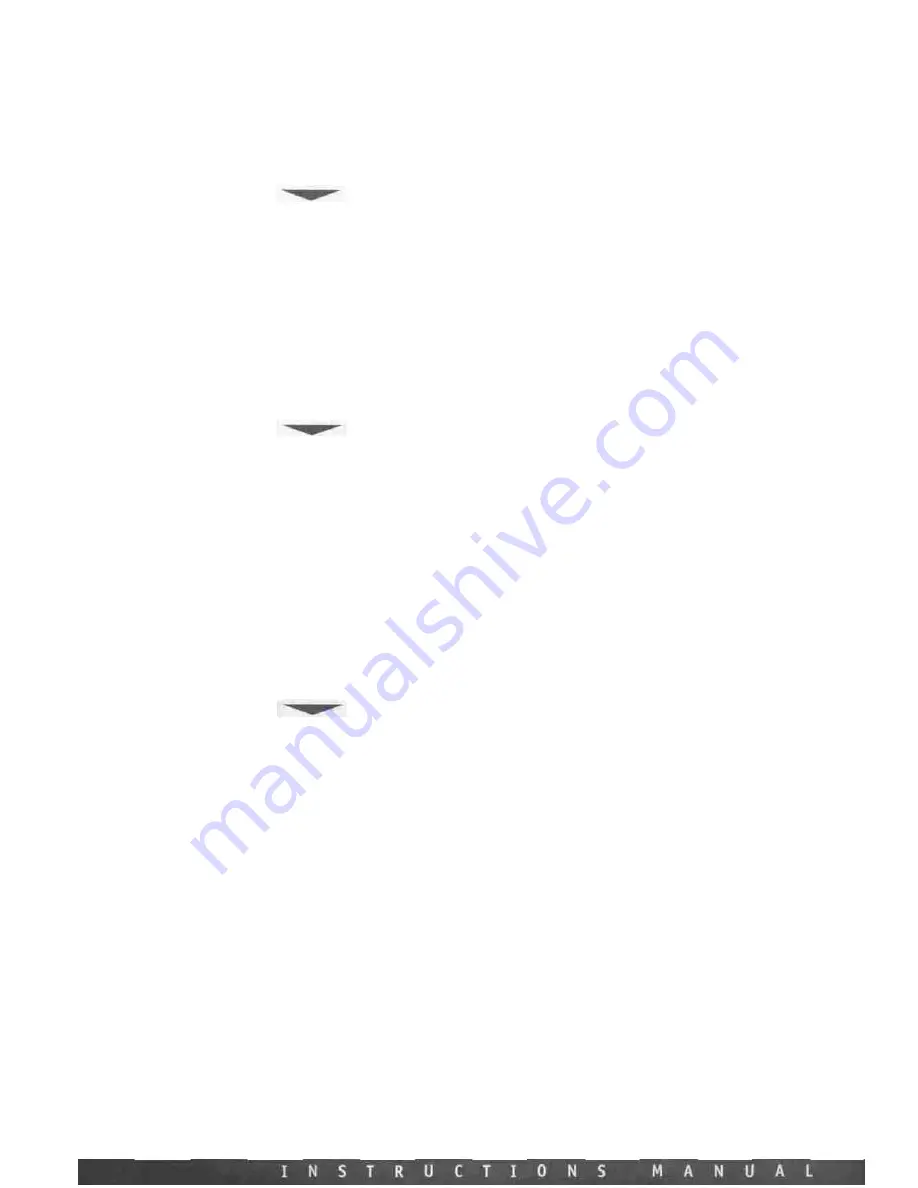
same key twice) or the entire length of the KEYBOARD by hitting the lowest and then the
highest key. The range can be any contiguous combination of notes in between the highest
and lowest note on the keyboard and completely independent and different for each zone. You
can ovelap any amount of notes from ZONE to ZONE. '
TRANSPOSE
Used to TRANSPOSE the range of keys on a ZONE up or down a specific amount of half steps
from middle C. Normally the "3" ZONES have a TRANSPOSE value of "O". This means that the
middle C corresponds to the central middle "C" on the Grand Staff, (providing the stored patch
in your synthesizer module is set to the same value).
Let's say you want to transpose and raise the tone of a ZONE by 4 semitones. Enter EDIT
mode, select the desired ZONE to be edited, select the TRANSPOSE function using the
UP/DOWN keys. Now hit 4 on the numerical keypad and exit the EDIT mode. Let's say you wan-
ted to lower the tone by an octave. Follow the same procedure as above but instead of hit-
ting (4) on the 10 key keypad, first hit the minus key then enter 12 and exit EDIT mode. You
can TRANSPOSE a maximum of +/" 24 semitones (or two octaves) by entering a positive or
negative number up to 24 (+ or -). Positive values are entered by depressing the desired num-
ber keys and negative values are entered by first hitting the (-) key then the desired number
key(s).
SUSTAIN
This FUNCTION allows you to enable or disable the SUSTAIN PEDAL for each zone. For an exam-
ple, if you want to disable the SUSTAIN PEDAL for ZONE 2: While in the EDIT MODE press
UP/DOWN again to select the SUSTAIN function. Now that SUSTAIN is selected (LED switched
on), press the ZONE #2 button to select ZONE 2 or editing and then OFF key which corresponds
to "E flat" on the numerical keypad. After that, all the other ZONES will be affected by the
SUSTAIN PEDAL, while ZONE no. 2 will be excluded. To regain SUSTAIN PEDAL control on the
excluded ZONE, select EDIT, SUSTAIN and then press ON.
An obvious application for this FUNCTION would be to disable the Sustain Pedal on a ZONE set
to the lower end of the KEYBOARD that is set to a Bass patch. In addition, now use the other
ZONES to play a Piano or Pad/String sound layer leaving the SUSTAIN PEDAL functional for
them.
Hopefully you are starting to see even more of the possibilities now becoming available to you
using a Studio Logic Master Controller. With just a bit of creative thought on your part you
should be coming up with interesting and useful patches for your own musical needs.
WHEELS
This FUNCTION allows the user to disable or enable the two WHEELS for each of the three ZONES.
Again, as an example, if you wanted to disable the two WHEELS for ZONE 1: enter the EDIT
mode, select ZONE 1 for editing (pressing ZONE 1 button), now use the UP/DOWN buttons to
scroll to the WHEELS parameter selection (making sure its corresponding LED is lit,) then
select the OFF key (corresponding to middle Eb on the keyboard.) Now exit the EDIT mode by
depressing the ENTER/EDIT button. With this edit all the other ZONES will be affected by the
WHEELS while ZONE 1 will be excluded. To reverse this edit follow the same instructions as
above but instead select the ON button on the keyboard (corresponding to middle Db on the
keyboard.)
A possible application for this feature would be to have a ZONE or ZONES assigned to the lower
part of the keyboard set to sustaining or "Pad" sounds, with the top ends of these ZONES
ending somewhere in the middle of the keyboard, leaving room for a split above it.
Perhaps you can transpose the lower ZONES up an octave so that you would play chords on
the lower part of the keyboard but sounding in the middle range closer to middle "C". Leave
the SUSTAIN PEDAL enabled but disable the WHEELS for this ZONE or ZONES.
Now use remaining ZONES to create a layer using the upper unused remaining notes on the
keyboard. Assign this ZONE or ZONES to a lead patch or patches, disable the SUSTAIN PEDAL
for these ZONES but leave the WHEELS enabled.
Now you can perform and hold down chords in the lower part of the keyboard using and hol-
ding down the SUSTAIN PEDAL to "latch" the sustained chords.
Now, using both hands to play lead over the top, using the right hand to play melody and the
left to use the PITCH and MODULATION WHEELS, Release the SUSTAIN pedal to change chords
then SUSTAIN and "latch" again on the next chord and continue playing two handed leads over
the new chord.
















